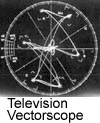|
A
major role of science is characterizing activity and objects
and then modeling these over time. Planetary motion is an
early example. Objects in the night sky have been studied and defined over
the millennia. A
major branch of mathematics - calculus - was devised to aid in
the precise descriptions and definitions, particularly as
regards change and movement over time.
Any professional astronomer or astrophysicist is a
skilled mathematician. They
define objects and then project how these move or change over
time.
Coming
back to Earth, let's work our way up through temporal aperture
extent models and propose that these are an ideal way to
define and project the phenomenon of consciousness.
Significantly, these models are scalable on a
continuum, which implies a natural inclusivity -
they are a unifying model of consciousness.
 Let's
start simply with the eye's sensation of light. If a researcher were to tap the nervous system and translate
the eye's red-green-blue cone sensor output to a compatible
format as a series of color bars were viewed, it might be
represented as in this image of an ordinary TV camera
vectorscope. If a
second vectorscope could simultaneously register the
perception of color, there almost always would be a
discrepancy between the eye's output and the brain's
perception since much background interpretation and
integration will have occurred in the brain's vision
processor. For example, the eye may see both
red and blue simultaneously, but the brain may integrate these
two colors to "show" purple. Let's
start simply with the eye's sensation of light. If a researcher were to tap the nervous system and translate
the eye's red-green-blue cone sensor output to a compatible
format as a series of color bars were viewed, it might be
represented as in this image of an ordinary TV camera
vectorscope. If a
second vectorscope could simultaneously register the
perception of color, there almost always would be a
discrepancy between the eye's output and the brain's
perception since much background interpretation and
integration will have occurred in the brain's vision
processor. For example, the eye may see both
red and blue simultaneously, but the brain may integrate these
two colors to "show" purple.
Were we to add a z-axis to our latter vectorscope and model it
over time - thus collecting all color perceptions taking place
in some period of time - then what started as a flat graph
would become a cylindrical volume.
That volume would eventually map every single possible
color that the subject's eye can register.
That map is this eye's, hence this person's, visual
temporal aperture. - its total potential opening to light over
time. The mapping
would denote all the colors that can be cognized by this
person over a period of time.
If
we continue this operation over every possible sense and
perception in the body, then we will create a large group of
volumes defining all possible senses and perceptions over a
period of time.
For
compound phenomena such as conceptualization, the measurement
and definitions become far more convoluted and complex.
Perceptions are an integration of sensations over time
(to borrow from calculus), and concepts are an integration of
sensations and perceptions over time.
Our graphed "conceptualization" volume as an
extension of the earlier mappings would contain traces of
every thought of food, sex, a closed business deal, a new car,
lines of poetry, etc., etc. through the whole range of that
person's experience over some period of time.
And so we have created a very complex volume of
chartings over time to define a person's entire temporal
aperture. This is
the working functional every day temporal aperture. It is the
collection and mapping of all sensations, perceptions, and
conceptualization by that person over a period of time.
It will alter and become more extensive as the person
acquires new knowledge, interests, and skills. The
psychological term "actualization" would imply
growth of the temporal aperture extent - a creation of a new
experiential opening over time.
The temporal aperture may likewise become less
extensive as the person ages beyond a certain point.
Our
image
showing the visual overlay of an ordinary antenna's complex
aperture on top of its physical structure is instructive.
That blue aperture graph denotes the antenna's surround
as relates to its design function.
It is proposed that a similar - but far more complex
volume - could surround human beings as a three dimensional
description of every single function - seeing, hearing,
perceiving, conceptualizing, etc..
Each person would have a more or less extensive
temporal aperture depending on their sum total of awareness
and action potentials.
But
there's more to the story.
On page two we noted that our
hypothetical amoeba's temporal aperture would be relatively
small and simple, containing but a few automatic responses to
microscopic stimuli. The
amoeba's temporal aperture doesn't contain the possibility
that the creature is being viewed by a larger, more complex
creature through a microscope.
Similarly,
in a Universe hypothesized to be infinite, there would be an
infinite range of dimensions beyond our nominal three.
Many scientists have proposed this, such as in the String
Theory. If
there were entities - and it's likely the case if we claim the
Universe is infinite - that function in more than 3
dimensions, then human beings would be a subject in their
temporal aperture the same way that an amoeba is a subject in
ours.
The
temporal aperture notion continuously scales from amoebas to
humans but only may stop there for anthropocentric thinkers -
where humans are thought to be the highest form of life.
If we allow the notion of entities with temporal
apertures beyond three dimensions -a likely case - then
fascinating new doors open.
If everyone's temporal aperture is potentially scalable
beyond a humdrum three dimensional existence,
then how would one become aware of it?
|